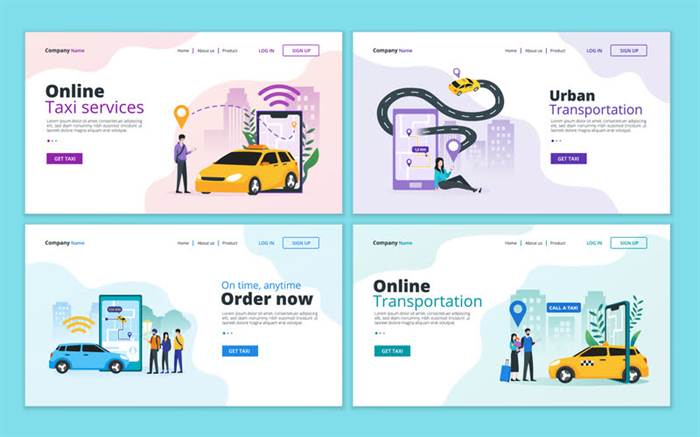Содержание
If that feedback is accepted, it’s then added to a new product backlog where it’s reviewed and prioritized during the next Sprint planning session. Sprint planning needs to happen right before the sprint but after the sprint review and retrospective. The sprint backlog is a list of stories and other items from the product backlog that the team has chosen to focus on during the next sprint. Discipline and goal-setting is critical to having successful Refinement sessions that your team will actually begin to look forward to. Have an agenda, insist on only introducing clearly defined stories, time-box discussion to five minutes per story, and agree to send stories back for more work if there are too many unanswered questions. As a team, don’t expect bunches of stories to be estimated if the requirements and/or priorities in the upcoming story backlog are not clear.
Find out how to create agile boards in Jira software with this step-by-step guide. Set up agile and jira automation to keep up to date seamlessly. In this post, we’re going to examine the different types of Scrum meetings and what they’re for. Burn Up Chart – is a visual diagram commonly used on Agile projects to help measure progress. Life-cycle phases from software project Мanagement by walker royce of IBM. Here we will provide you with Trading Card Game content, which you will like very much.
After a backlog refinement meeting, you should have a priority list of user stories. The highest information must be found in the items at the top of the backlog. Any stories near the top which are too big to handle should be split down into manageable, more doable jobs.
Three Pillars Of Scrum
We’re dedicated to providing you the best of a blog post ever, we supposed, with a focus on whatever TCG. We hope you enjoy our blog posts as much as we enjoy offering them to you. Because requirements in Scrum are only loosely defined, they need to revisited and clearly defined before they come into the Sprint.
- The Product Backlog may also be adjusted to meet new opportunities.
- The development team then chooses what should be prioritized in the sprint backlog.
- If the team is working a one-week sprint cycle, running a backlog refinement meeting every week is a recommended practice.
- The work that the development team commits to is known as the sprint goal, and the collection of tasks that make up that goal is known as the sprint backlog.
- Fostering discussion around what’s important gets everyone’s priorities in sync.
I like to hold the product backlog refinement meetings three days before the end of the current sprint. This gives the product owner sufficient time to act on any issues that are identified. Some teams find that doing shorter meetings every week rather than once per sprint are more suited to their cadence, and that is, of course, fine. A good backlog refinement session discusses only a small set of user stories.
When Can Product Backlog Refinement Occur?
During the sprint planning meeting, the product owner describes the highest priority features to the team. You can turn your final goal into a step-by-step instruction with proper Sprint planning and project management tools. Everyone on the team will know the final goal after a productive planning session, and the team will be committed to accomplishing it. In project management, sprints also help you discover and resolve issues that may impact the project in the future. The danger of surprises is greatly reduced after carefully planning an Agile project sprint, and all you have to do now is get to work.

When adding new user stories to the backlog, be on the same page as your product owner. The objective of backlog refinement is not to reduce the number of user stories. Before a story is ready for sprint planning, it needs to be “groomed.” With the product owner, the development team decides the sprint’s goals, duration, and story points. The development team then chooses what should be prioritized in the sprint backlog.
This is done during the current sprint in a ceremony called Product Backlog Refinement. Adjust the priority of the story with the permission of the Product Owner. Whoever is presenting stories in Refinement should be the person who can make a decision about them. If a question needs to be escalated for a decision, it’s that person who needs to be in the room. Fostering discussion around what’s important gets everyone’s priorities in sync.
What Is Backlog Management?
Customer satisfaction through continuous delivery of the product. Provide sprint-related questions to be asked at the start of the meeting. Determine the team’s overall strategic goal for the upcoming sprint. The sprint goal is a brief written overview of the team’s plans for the next sprint. The product owner and/or additional members of the product team. Once the backlog grows beyond the team’s long term capacity, it’s okay to close issues the team will never get to.
To effectively build out your user story, you’ll need the combined expertise of your team’s many tasks. Many scrum teams dread the idea of attending a refinement session, and in many cases it’s totally understandable because the main input – the backlog – is not actually ready to be looked at yet. That just leads to wasted time in the form of discussions that do not move the team in a forward direction or yield a backlog of stories that are sprint ready, and that creates frustration all around. The backlog serves as the connection between the product owner and the development team.
It Service Management
Learn more in our article about work-in-progress limits and flow. While the product owner is tasked with prioritizing the backlog, it’s not done in a vacuum. Effective product owners seek input and feedback from customers, designers, and the development team to optimize everyone’s workload and the product delivery.
The average length of a Sprint retrospective is 90 minutes for a two-week sprint. If a sprint lasts a week, the retrospective should be about 45 minutes. If your sprint runs for an entire month, the meeting should be three hours long. The entire Scrum team and often outside stakeholders attend these meetings. The daily standup happens every day at an agreed-upon time and is done standing up.
Flag those issues with a specific resolution like “out of scope” in the team’s issue tracker to use for research later. Since the Teams in Space website is the first initiative in the roadmap, we’ll want to break down that initiative intoepics and user stories for each of those epics. By asking these questions earlier, the product owner is given a chance to arrive at answers to any questions he or she may not be prepared to answer immediately. For projects to succeed on time and within budget, the entire Scrum team needs to communicate and be on the same page.

This combination of the backlog screen from scrum and the kanban board into one agile board functions like a scrum board backlog. If the team is working a one-week sprint cycle, running a backlog refinement meeting every week is a recommended practice. On the other, if you are working on a two-week sprint cycle, running these meetings every alternate week should be considered.
Product Backlog Refinement Explained 1
The most important items are shown at the top of the product backlog so the team knows what to deliver first. The development team doesn’t work through the backlog at theproduct owner’space and the product owner isn’t pushing work to the development team. Instead, the development team pulls work from the product backlog as there is capacity for it, either continually or by iteration .
What Is Purpose Of Backlog Refinement?
If it’s work for the development team, keep it in a single backlog. Successful product owners will see their stakeholders as a team, not merely a set of individuals. Mike Cohn specializes in helping companies adopt and improve their use of agile processes and techniques to build extremely high-performance teams. He is the author of User https://globalcloudteam.com/ Stories Applied for Agile Software Development, Agile Estimating and Planning, and Succeeding with Agile as well as the Better User Stories video course. Mike is a founding member of the Agile Alliance and Scrum Alliance and can be reached at If you want to succeed with agile, you can also have Mike email you a short tip each week.
It’s easy to transform a product backlog into a catch-all for ideas that never materialize. User stories without a clear purpose or definition make the product backlog harder to manage. De-prioritize user stories that you don’t plan to implement in the next 2-3 sprints.
To help clarify any uncertainty, discuss user stories with the team and address related queries. If you’re unfamiliar withScrum, it’s a framework based on the Agileproject management methodology. During the event, the Scrum Team and stakeholders review what was accomplished in the Sprint and what has changed in their environment. Based on this information, attendees collaborate on what to do next. The Product Backlog may also be adjusted to meet new opportunities. The purpose of the Sprint Review is to inspect the outcome of the Sprint and determine future adaptations.
A project management methodology that breaks down larger projects into smaller, manageable chunks known as iterations. At the end of every iteration , something of value is produced. The product that’s produced during every iteration should be able to be placed into The concept of Product Backlog Refinement the world to receive feedback from stakeholders or users. Agile’s highest priority is to satisfy the customer through the early and continuous delivery of crucial products and services. At refinement sessions, the entire cross-functional team must be represented.
It’s really amazing to watch teams work through the estimation process on small, clear stories like a well-oiled machine. But to get there, it helps to make sure everyone understands what the session is, and isn’t, supposed to look like. The product owner prioritizes the backlog at the start of the project, but doesn’t adjust it as feedback rolls in from developers and stakeholders. Keep everything in one issue tracker–don’t use multiple systems to track bugs, requirements, and engineering work items.
2.Embrace any changing requirements, even when it is late in project development. Agile’s processes leverage change for a customer’s competitive advantage. Collaborate with the customer building what they want to ensure we are building what the customer wants. List of all issues (aka user stories, bugs etc..) that the project is currently aware of.
